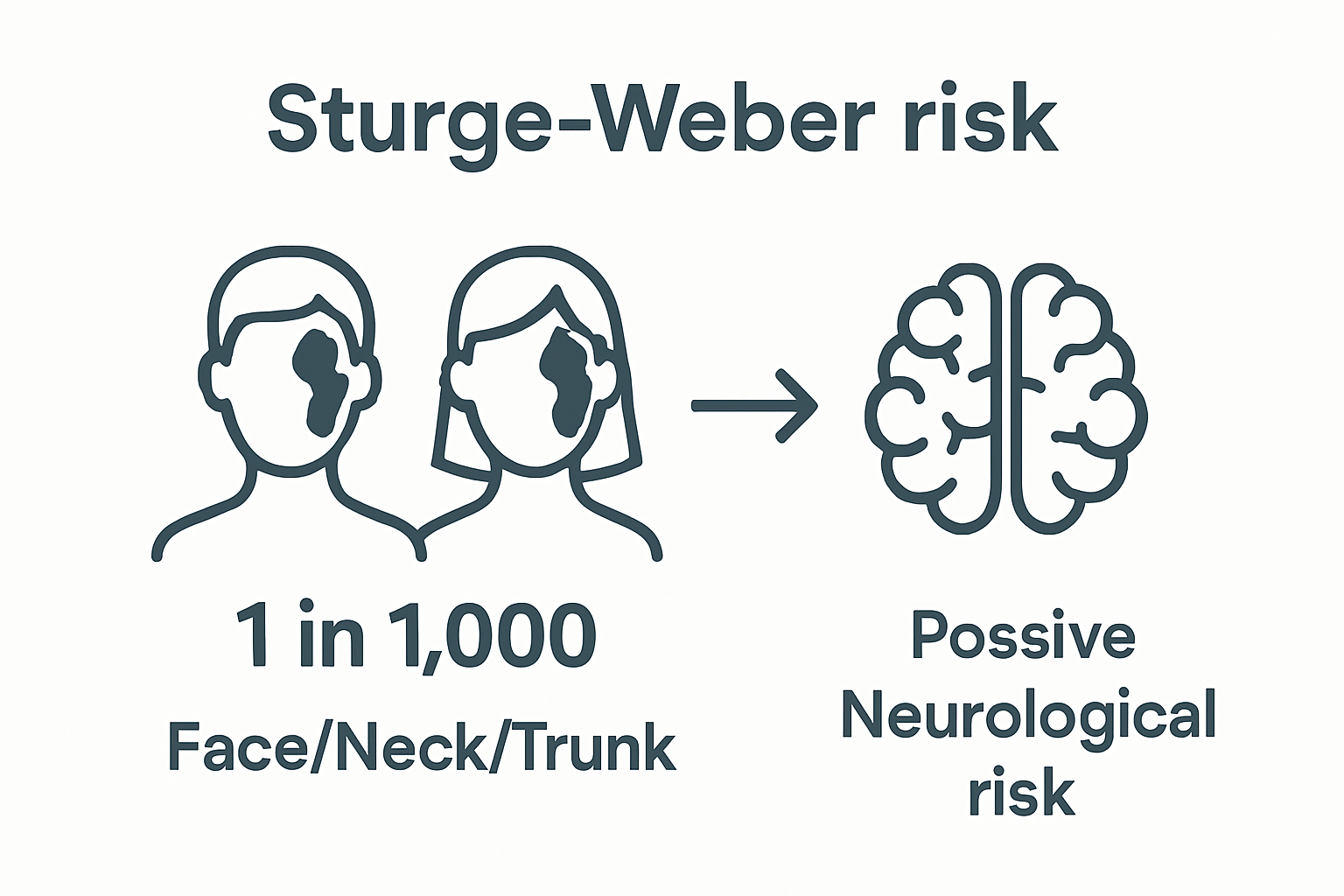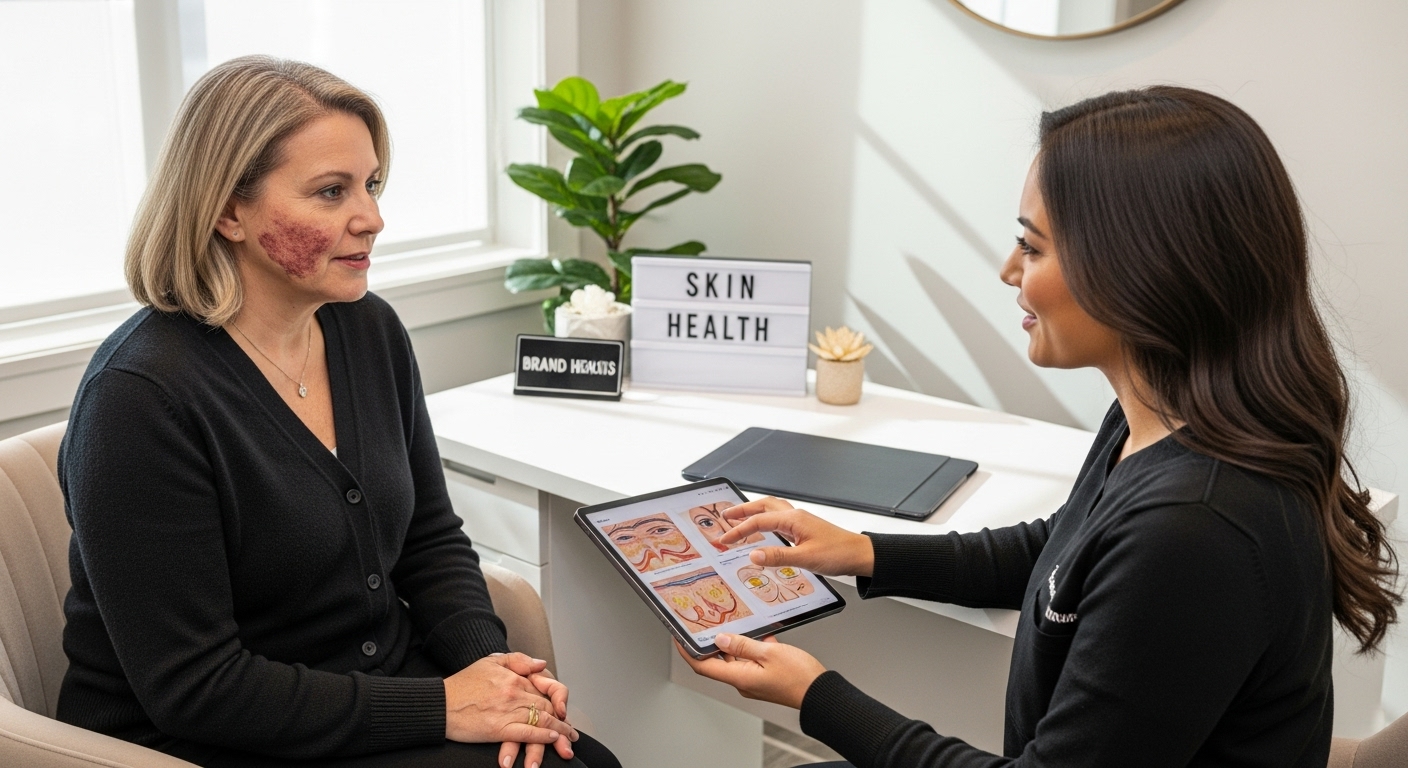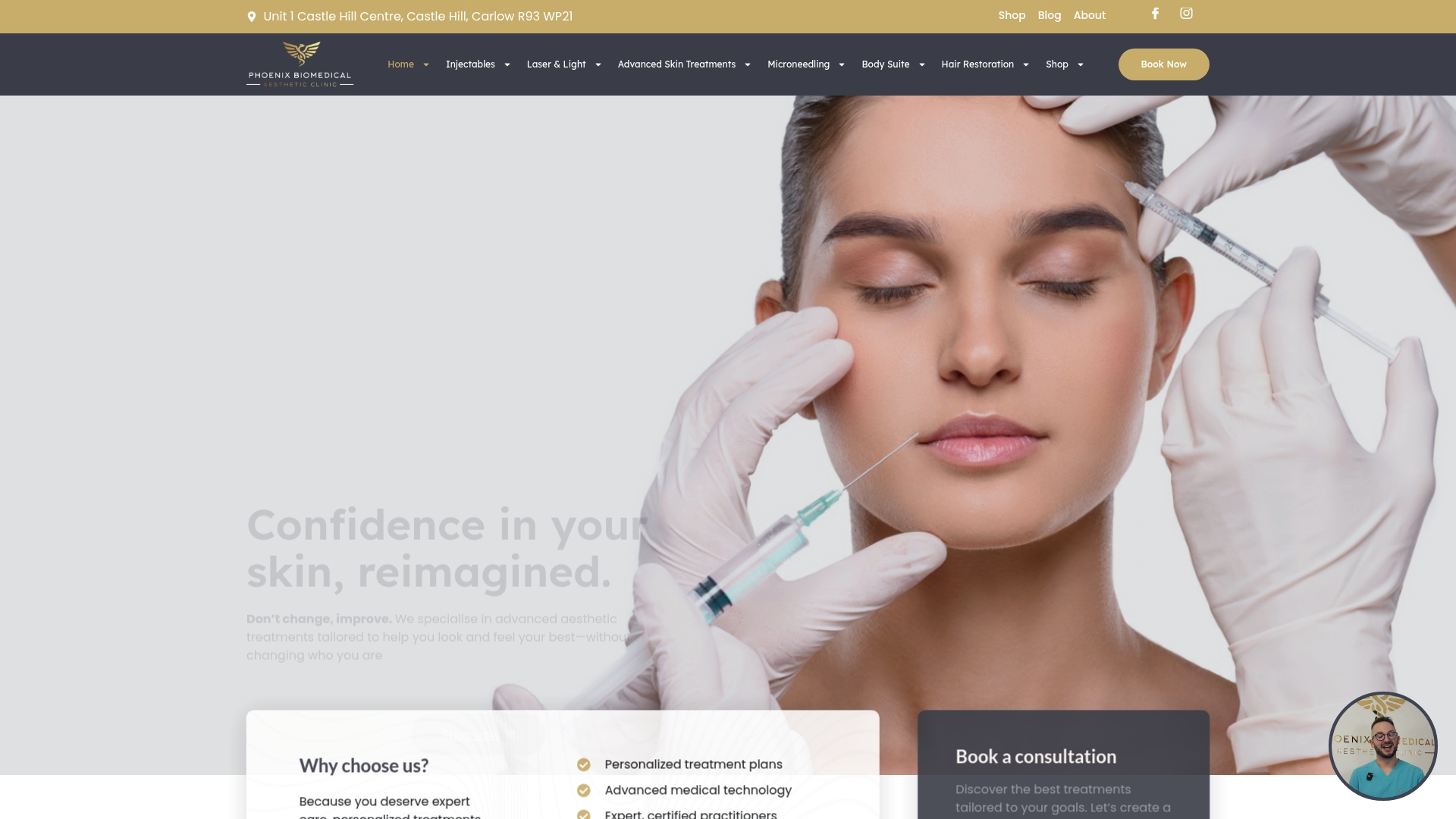Understanding Port Wine Mark on Face: What You Need to Know
Port wine marks stand out for their deep red or purple hues, drawing attention the moment you see them. Only about 3 in every 1,000 newborns have these unique birthmarks, making them a rare sight for most people. Few realise these marks reveal much more than meets the eye, as their presence can sometimes signal deeper medical stories just beneath the surface.
Table of Contents
- What Is A Port Wine Mark And How Does It Develop?
- The Importance Of Understanding Port Wine Marks In Skin Health
- How Port Wine Marks Affect Aesthetic Choices And Self-Image
- Exploring Treatment Options And Considerations For Port Wine Marks
Quick Summary
| Takeaway | Explanation |
|---|---|
| Port wine marks are vascular birthmarks. | These marks are characterized by reddish-pink to deep purple discolouration due to capillary malformations during embryonic development. |
| Medical evaluation is crucial. | Professional assessment is necessary, especially for facial marks, as they can indicate underlying neurological conditions like Sturge Weber syndrome. |
| Psychological impact is significant. | Visible differences can affect self-esteem and social interactions, making it important for individuals to address their emotional responses. |
| Laser treatment is common and effective. | Pulsed dye lasers target abnormal blood vessels, progressively reducing mark intensity and improving skin appearance over multiple sessions. |
| Multiple management strategies exist. | Individuals may consider cosmetic camouflage, psychological support, or topical treatments alongside medical interventions to enhance self-confidence. |
What is a Port Wine Mark and How Does it Develop?
A port wine mark, medically known as a port wine stain (PWS) or nevus flammeus, is a distinct type of vascular birthmark characterised by a flat, reddish-pink to deep purple discolouration on the skin. These unique marks appear due to abnormal development of blood vessels during early embryonic stages, resulting in permanent pigmentation that remains visible throughout an individual’s lifetime.
Understanding the Biological Mechanism
Port wine marks develop from a specific congenital anomaly involving capillary malformation in the skin. During embryonic development, specific blood vessels fail to mature and develop correctly, leading to persistent dilated capillaries just beneath the skin’s surface. This structural irregularity causes the characteristic reddish or purplish discolouration that distinguishes port wine marks from other types of birthmarks.
The formation occurs randomly and is not typically inherited, making these marks a unique developmental occurrence. Research from Stanford Medical Centre suggests that approximately 3 in 1,000 newborns are born with port wine marks, demonstrating their relative rarity.
Location and Appearance Variations
Port wine marks can appear anywhere on the body but are most commonly found on the face, neck, and upper trunk regions. Their appearance can vary significantly between individuals, presenting with different:
- Colour intensity (light pink to deep purple)
- Surface texture (smooth or slightly raised)
- Size and shape (small patches to extensive coverage)
While most port wine marks are purely cosmetic and harmless, some can be associated with underlying neurological conditions like Sturge Weber syndrome, particularly when located on the face. Medical professionals recommend careful evaluation to rule out potential complications and ensure appropriate monitoring.

Understanding these unique birthmarks helps individuals recognise their origin and potential implications, empowering them to make informed decisions about potential treatment or management strategies.
The following table summarises key features that help distinguish port wine marks from other vascular birthmarks, based on their characteristics and medical significance.
| Feature | Port Wine Mark | Other Vascular Birthmarks |
|---|---|---|
| Typical Colour | Reddish-pink to deep purple | Red (haemangiomas), bluish (venous malformations) |
| Texture | Usually smooth, can become raised over time | Haemangiomas can be raised or lumpy |
| Permanency | Permanent, does not fade without treatment | Some (e.g., haemangiomas) may fade naturally |
| Common Locations | Face, neck, upper trunk | Varies (haemangiomas often on head/neck, venous malformations elsewhere) |
| Associated Medical Risks | May indicate neurological syndromes if facial | Less commonly linked to syndromes |
| Onset | Present at birth | Often present at or shortly after birth |
The Importance of Understanding Port Wine Marks in Skin Health
Understanding port wine marks goes far beyond aesthetic considerations, representing a critical aspect of comprehensive skin health assessment and potential medical monitoring. These unique vascular birthmarks are not merely cosmetic features but can serve as important indicators of underlying physiological conditions that require professional medical attention.
Early Detection and Medical Implications
Port wine marks can be significant signals of potential health complications, particularly when they appear in specific locations or exhibit certain characteristics. Dermatological research highlights the importance of professional evaluation to identify potential associated medical conditions. Careful clinical assessment can help detect neurological disorders, particularly those linked to extensive facial port wine marks.
According to Johns Hopkins Medicine, certain port wine mark presentations might indicate more complex medical syndromes that require specialised medical intervention. Key indicators that warrant immediate medical consultation include:
- Marks covering large areas of the face or body
- Unusual colour intensity or rapid changes in appearance
- Associated neurological symptoms
- Presence of additional skin or developmental anomalies
Psychological and Social Considerations
Beyond medical implications, port wine marks can significantly impact an individual’s psychological well-being and social interactions. The visible nature of these marks, especially when located on exposed areas like the face, can influence self-perception and social confidence. Understanding these marks helps individuals develop strategies for managing potential emotional challenges and seeking appropriate support.
Comprehensive skin health assessment involves recognising port wine marks not just as physical characteristics but as potential windows into broader health landscapes. Professional dermatological evaluation provides crucial insights, offering both medical reassurance and personalised guidance for individuals with these unique birthmarks.

How Port Wine Marks Affect Aesthetic Choices and Self-Image
Port wine marks represent more than a simple skin condition, deeply influencing an individual’s aesthetic perception and personal identity. These unique vascular birthmarks can profoundly impact psychological well-being, self-confidence, and social interactions, compelling individuals to explore various coping and management strategies.
Psychological Impact and Social Perception
Individuals with port wine marks often experience complex emotional responses related to their visible difference. The location and prominence of these marks significantly influence personal comfort and social interactions. While some people embrace their distinctive marks, others may feel self-conscious and seek methods to minimise their appearance.
Research from University of California Dermatology Department indicates that facial port wine marks can create unique psychological challenges, particularly during developmental years when social acceptance becomes increasingly important. The visibility of these marks can trigger heightened self-awareness and potential social anxiety.
Aesthetic Management and Intervention Strategies
People with port wine marks often explore multiple approaches to manage their aesthetic appearance, including:
- Cosmetic camouflage techniques
- Advanced laser treatment options
- Professional makeup application
- Psychological counselling
- Clothing and accessory choices that provide strategic coverage
These strategies reflect a proactive approach to managing personal appearance and building self-confidence. Each individual’s response is unique, with some choosing complete acceptance while others prefer more interventionist approaches.
Ultimately, understanding port wine marks involves recognising them as more than physical characteristics. They represent deeply personal experiences that intersect medical, psychological, and social dimensions of human identity. Professional support and personalised strategies can help individuals navigate these complex emotional landscapes, promoting self-acceptance and emotional resilience.
Exploring Treatment Options and Considerations for Port Wine Marks
Treatment approaches for port wine marks have evolved significantly, offering individuals multiple strategies to manage and potentially reduce the appearance of these distinctive vascular birthmarks. The selection of an appropriate treatment depends on various factors, including the mark’s location, size, intensity, and the individual’s overall health and aesthetic goals.
Laser Treatment Techniques
Laser therapy represents the most advanced and widely used treatment method for port wine marks. These sophisticated medical interventions target the abnormal blood vessels responsible for the discolouration, breaking down pigmentation and promoting more uniform skin appearance. Pulsed dye lasers have emerged as the primary therapeutic approach, delivering precise energy that selectively damages problematic blood vessels while minimising damage to surrounding tissue.
According to American Academy of Dermatology, laser treatments typically require multiple sessions, with effectiveness varying based on individual skin characteristics and the mark’s specific properties. The treatment process involves:
- Gradual reduction of mark intensity
- Minimal invasive intervention
- Potential improvement in skin texture
- Reduced risk of scarring
Additional Therapeutic Considerations
Beyond laser treatments, individuals have access to complementary approaches for managing port wine marks. These alternative strategies include:
- Specialised medical-grade concealer techniques
- Psychological support and counselling
- Topical treatments to improve skin appearance
- Ongoing dermatological monitoring
Each treatment approach requires personalised consultation with specialist practitioners who can assess individual needs and recommend the most appropriate intervention strategy.
The table below provides an overview of the primary treatment options for port wine marks, outlining the nature of each strategy and potential benefits as described in the article.
| Treatment Option | Description | Potential Benefits |
|---|---|---|
| Pulsed Dye Laser Therapy | Targets abnormal blood vessels with precision laser | Reduces discolouration, minimal scarring, gradual results |
| Cosmetic Camouflage | Use of medical-grade concealers or professional makeup | Masks appearance, boosts immediate confidence |
| Psychological Support | Counselling and emotional support for individuals | Improves self-esteem, addresses emotional impact |
| Topical Treatments | Skincare products to improve texture and tone | Enhances skin appearance, supplementary strategy |
| Ongoing Dermatological Care | Regular monitoring and tailored advice from specialists | Personalised management, early detection of issues |
Restore Confidence and Clarity with Specialist Port Wine Mark Treatments
If you are living with a port wine mark on your face, you know that it is about more than just appearance. The emotional impact and concerns about long-term skin health can weigh heavily on your mind. As discussed in the article, issues such as visible capillary malformations, changes in colour intensity, and the daily stress of managing self-image are real challenges. But solutions exist beyond acceptance or cosmetic camouflage. At Phoenix Biomedical.ie, we offer advanced, non-invasive treatments tailored for unique vascular birthmarks. Our expert practitioners use cutting-edge laser devices and personalised care plans to target skin redness and pigmentation, helping you feel more confident and in control of your appearance.

Let us help you turn knowledge into action. Book a private consultation today through our appointment booking portal to receive honest advice and a treatment strategy based on your needs. You deserve specialist support, clinical expertise, and visible results—discover how at Phoenix Biomedical.ie.
Frequently Asked Questions
What is a port wine mark?
A port wine mark, or port wine stain (PWS), is a vascular birthmark characterised by a flat, reddish-pink to deep purple discolouration on the skin, resulting from abnormal blood vessel development during embryonic stages.
How do port wine marks develop?
Port wine marks develop from a congenital anomaly involving capillary malformation in the skin, where specific blood vessels fail to mature correctly, causing persistent dilation and the characteristic discolouration.
Are port wine marks linked to any health conditions?
Yes, while most port wine marks are harmless, some can be associated with underlying conditions such as Sturge Weber syndrome, especially when located on the face. It is essential to seek professional evaluation for any potential complications.
What treatment options are available for port wine marks on the face?
The primary treatment for port wine marks is laser therapy, particularly pulsed dye lasers, which target the abnormal blood vessels to reduce discolouration. Various supportive measures, including cosmetic camouflaging and psychological support, may also be considered.
